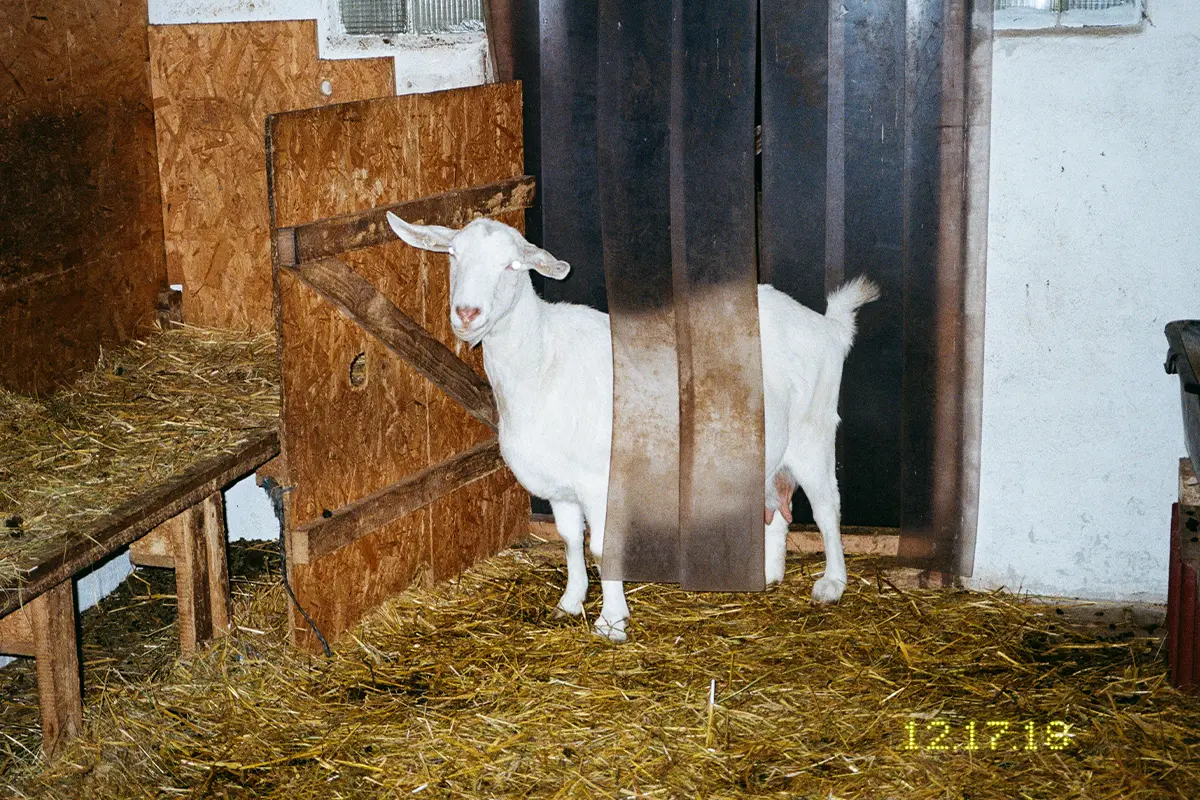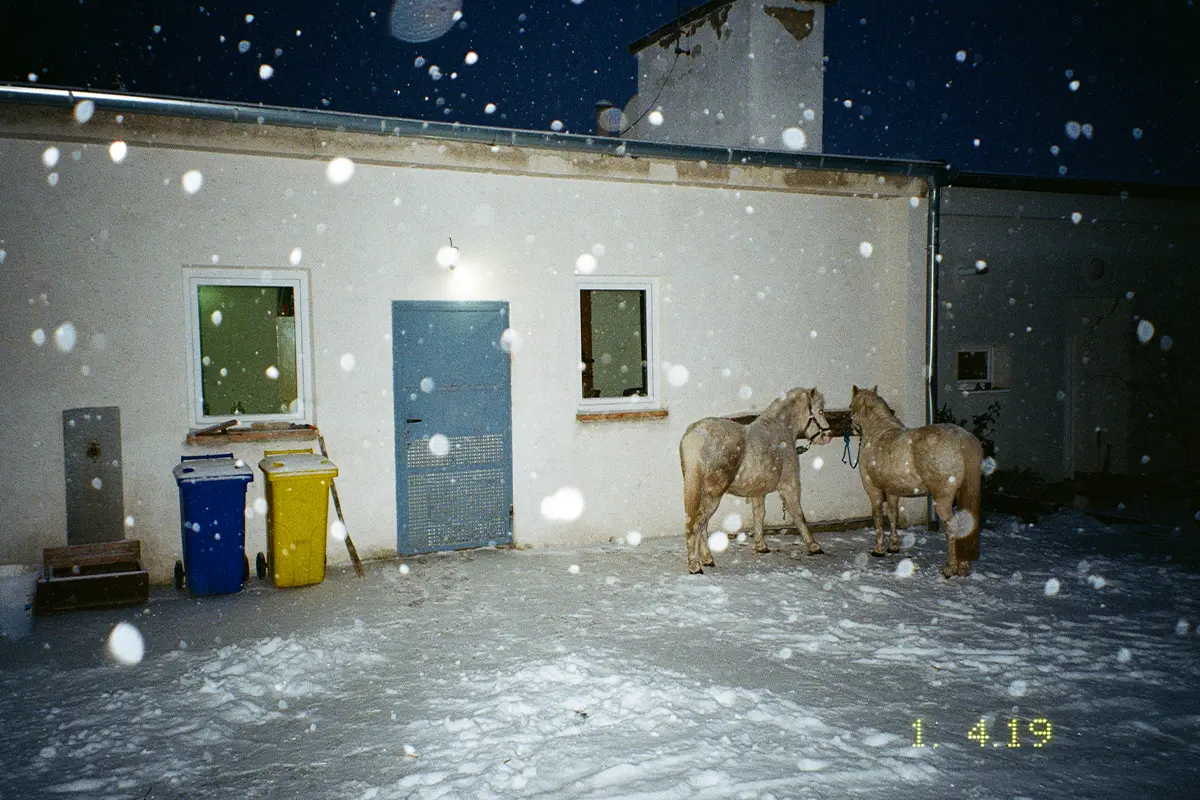Tracing an itinerary of self, Marie Tomanova collects images from her return home. It Was Once My Universe is an intimate volume, documenting the urgency to belong
It Was Once My Universe, Marie Tomanova – about going home
Home is a matter of time rather than of place, a question of how long you can fit in rather than where you fit in. With her new book, It Was Once My Universe, Marie Tomanova documents the process of relocation to her homeland. Mikulov, the city where she was born in the Czech Republic, lingers on the photographs taken over one year, from 16 December 2018 to 5 January 2019. Marie’s images capture fragments of her upbringing. While surrounded by frozen air and old rooms, each picture follows the time zone in New York, a reminder of her presence in both spaces.
Tomanova’s immigration story started in 2011 when she decided to follow an art program in the United States, where she somehow got stuck for eight years waiting for her green card. In the artist’s previous books, Young American and New York, New York, the gaze stay on the discovery of a new persona crafting an identity in foreign spaces. Without a centered location, Tomanova relies on herself as a reference, her body becoming the only familiar element she recognizes through self-portraits.
If New York, New York is about a sense of serendipitously fabricated communities and street portraits of youth, It Was Once My Universe is about the misleading idea of family. A group of people one is expected to know and have intimacy with, but who can, in reality, be strangers at heart. To photograph them is to meet them again, shape a personal relationship, and bashfully update a memory.
Immigration and vulnerability. Between the blurred lines of time
Coming from an eastern culture, Marie Tomanova doesn’t have to describe her background. Art makes the distinction for her. Between the Czech Republic and New York, she is the only red thread connecting two different states of existence. When she came back home, Marie tried to trace her decision of leaving everything she knew. She wanted something to confirm her disengagement and revolt; something to cause her determination to move to the other side of the world. None of her diaries gave away hints.
The improbability of leaving sometimes dictates that action. Marie thinks of how none of her family members ever visited the United States, and neither had she. America was a complete stranger, an undiscovered lover. After landing in North Carolina carrying only one piece of luggage and just as little knowledge of English, Marie had to readjust to being the stranger herself.
«I lived and worked for a family, yet never before had I felt so lonely and isolated. I knew nobody and nobody knew me. Everything was new, different, foreign, and often undecidable. There was so much magic in wandering the city, alone. Being lost on the inside, as well as on the outside. Allowing the city to swallow me, chew me apart, and transform me. I had so many new feelings and dreams. I felt utterly alive. New York allowed me to become».
Marie Tomanova, her home and the American background
It Was Once My Universe isn’t merely a photographic album filled with nostalgia. It tackles profound feelings linked with immigration and freedom, addressing the suppression that comes with national borders. Waiting for her green card, Marie had to compromise her liberty and contour a new identity that would feel familiar in the American background. «I still sometimes can’t fully comprehend how absurd it is that one’s life could be defined and restricted by the system, by how much the government can dictate your life and decide where you do or do not belong».
When she landed home in Mikulov in 2018, she had one year to re-digest her past meanwhile participating in a foreign present. Marie uses the words confusion or disillusionment to describe the lack of synchronization between projections of home and the row reality. She witnessed her mother’s wedding and lived Christmas and New Year’s Eve with family or friends with an «internal clash of personalities».
Through photography, Marie allowed time to take its course and gave herself the space to put aside un-comprehended emotions. «There was certain liberation in capturing everything that spurred feelings in me. I didn’t have to decode those feelings immediately. I could file them away on the film and keep them for later. It was a process of acknowledging what I was going through without having to understand it right away».
Retracing Myself, Searching Through Time
Glancing over the sharp images, the blurred colors, and the hazy contrasts, there’s an act of bravery to be recognized in Tomanova’s return home. She doesn’t identify with her memory of self, her growth holding onto the relationship with American street corners. In the spontaneity of each image, one can spot the intention to push away drowning thoughts, making room for honesty.
Lucy Sante describes the image collection as emotional, private, and unprotected, with a sense of conflict and disorientation slipping underneath an intimate image of home. Before social media, home walls were sheltered, almost kept secret, at distance from strangers. It wasn’t about aesthetics or decoration guides. It was a space shared with confidentiality that needed self-protection. In her photographs, Marie Tomanova disrupts the habit of sacred gatekeeping a space, by sharing meaningful details.
The artist grew up on a street named Gagarinova Mikulov, in the South Moravian region of the Czech Republic, close to the Austrian border, approximately an hour from Vienna. «Mikulov has a famous castle, two streams and a number of ponds, some low hills, and a wine industry. It had a significant Jewish population until the Holocaust and a major German population until 1945».
Being there, Marie recalls her experience as a way of «retracing myself, searching through time». Her grandmother passed away while the artist was still living in the States. The return signaled a truth of things changing much as the realization of time evolving with or without one’s presence. «There were times when it felt dark. My grandma passed away, and I never saw her again. My sisters’ kids grew into adults without knowing me. I wasn’t present in my family’s life, nor were they in mine»
To feel naked without your parents’ clothes
Some of the pictures in It Was Once My Universe are naked self-portrayals of Marie Tomanova in her home surroundings. Similar to her first images shot in America, they evoke a state of vulnerability spawned by the return to origins. Relationship with clothing plays a significant part in the book, as it connects her to her family and memories. Garments can be powerful that way. Wearing her dad’s sweater and her mother’s coat, she can physically, tangibly hold on to her parents, them being together, them raising her.
Even more so after her father passed away, Marie redeems their bond through the washy green sweater. To emphasize this feeling of familiarity, are the naked shots of Marie standing in front of Mikulov’s castle. The nude poses confess the recognition of involuntary absence. As Lucy Sante puts it, «artists have almost always been from somewhere else, anyway. That scene has been a literary trope since the early nineteenth-century Romantics. It dramatizes the renunciation an artist makes, in a process parallel to monastic orders, exchanging certainties for possibilities».
The universal fragility in front of our roots
To feel naked without your parents’ clothes is only the mark of a reconnection pursuit of purposefully existing in a community. Marie captures the universal fragility in front of our roots. It is humbling and refreshing. «I dressed up a couple of times in my old clothes and felt strangely in between. I felt the urgency to place myself again in all of my favorite places around Mikulov where I used to go with my dog. I was retracing myself. My past. My connection to family, self, and home».
In ‘My Old Clothes, My old room’, Marie assembles a crowded portrait. Clothes and notebooks cluttered on the shelves of a dark closet construct the background for her androgyne physic dressed up in a pale V-neck feminine blouse. ‘Dressing up in my old clothes’ has a clowney energy, the artist captured standing still in the pink-washed childhood room dressed in an unlikely outfit. A kitsch beanie, dark jeans, and a colorfully printed polo suggest the distance between her person and the clothes she once wore.
Familiar but disoriented. The gaze of homecoming
There is food, white horses, snow-covered scenery, and family portraits. Marie Tomanova mingles with details like a Rubik cube, and it all comes together. Descriptions narrate her observations with naturalness. Nothing is encrypted; Marie’s life comes out in the open, a feature representing with precision the strength of her expression. In Was it just a dream?, the artist captures the back of two white horses – Pum and Gabi, while in Paintings, we see her first drawings.
Alongside typical meals such as Knedilky or Schnitzel and familiar characters, we see clumsy landscapes like On the Holy Hill and Fields. With the help of snow, Marie’s memory collection envelops contrasts of warm and cold, being both outside and inside, the richly contrasting sensation she holds in her home. «She is a portraitist who loves open space, so her pictures often tend to be landscapes with a central upright figure, which naturally entails symmetry. She approaches her subjects head-on, often equipped with a flash for more thorough disclosure», Lucy Sante explains in the book’s foreword.
It Was Once My Universe feelings of alienation
Familiar but disoriented, Marie Tomanova fits tastes, textures, and scents in the hypnotizing melancholic gaze she throws at her past. In order to deeply appreciate It Was Once My Universe, it takes the rooted feelings of alienation that come with immigration. Marie’s story can easily be that of anyone, embodying people lucky enough to meet themselves in different surroundings.
However, sadness pierces while flipping through the book when distant images can seed empathy for a brutally human experience. «These photographs of home still make me uneasy. They are deeply personal and reveal who I am and where I come from. I remember standing in the old quarry towards the end of my trip, dressed in my mom’s teal coat, looking around with a deep strange feeling in my heart knowing that – it was once my universe. All of it. It was all I once knew».
Marie Tomanova
Marie Tomanova was born in former Czechoslovakia and grew up in the small border town of Mikulov in South Moravia. She currently lives and works in NYC. Her work addresses issues of place, displacement, memory, identity, gender, and community through photography, film, and installation.




















